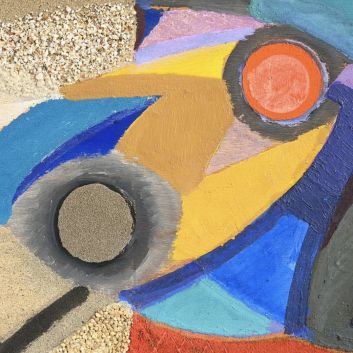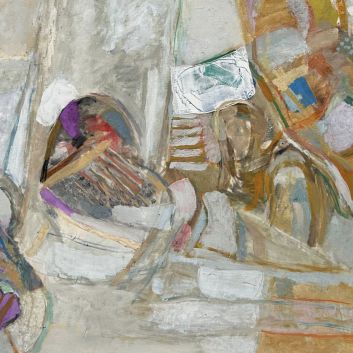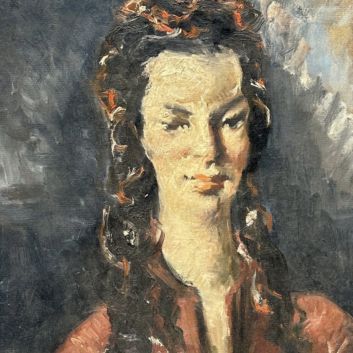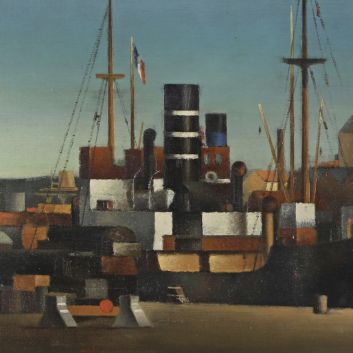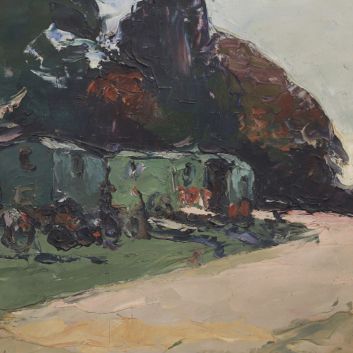Rating and value of paintings by Max Oppenheimer

If you own a work by or based on the artist Max Oppenheimer and would like to know its value, our state-approved experts and auctioneers can help you.
Our specialists will carry out a free appraisal of your work, and provide you with a precise estimate of its current market value.
Then, if you want to sell your work, we'll point you in the right direction to get the best possible price for it.
Artist's rating and value
Max Oppenheimer's value on the art market is extremely high. His most prized works are his expressionist canvases, both portraits and self-portraits.
The artist is particularly prized among 20th-century Austrian painters and draughtsmen. Max Oppenheimer's works sell for between €80 and €446,000 at auction.
In 2009, his painting Die Geisselung (oil on canvas), dating from 1913, sold for €446,000, whereas its estimate was between €350,000 and €700,000.
Order of value from the most basic to the most prestigious
Technique used | Results |
|---|---|
Print - multiple | From €80 to €8,000 |
Drawing - watercolor | From €140 to €45,000 |
Paint | From €600 to €446,000 |
Response in less than 24h
Style and technique of artist Max Oppenheimer
Max Oppenheimer, an emblematic figure of Expressionism, is distinguished by a unique technique that seeks to capture the turbulent essence and torments of his time.
Born in Vienna, Oppenheimer was influenced by the European avant-gardes, but quickly distinguished himself from his contemporaries with his own personal approach.
Her canvases reveal a bold use of color, where bright, saturated hues dominate. Bright reds, vibrant yellows and deep blues make up a palette that energizes the composition and accentuates the emotional intensity of his works.
Oppenheimer doesn't just depict reality: he seeks to reveal the inner tension of his subjects. His portraits, in particular, depict stark faces, almost distorted by harsh light, giving the impression of unvarnished introspection.
Thick, deliberate black outlines delineate the forms in a manner reminiscent of stained-glass techniques, giving his figures a presence that is both dramatic and fragile. The bodies, often stylized, seem caught in suspended movement, betraying a latent restlessness.
His use of color, far from being merely aesthetic, aims to underline violent contrasts and heightened emotions. The brushstrokes, at times quick and nervous, at others heavy and sustained, convey an almost feverish energy, as if each gesture were seeking to extract a truth buried beneath the surface.
Like Oskar Kokoschka, Oppenheimer favors raw sincerity over ideal beauty, never hesitating to explore disturbing or complex subjects.
He often depicts solitary figures, immersed in their thoughts, isolated by abstract backgrounds or geometric compositions, reinforcing the sense of unease or contemplation that his works evoke.
His style, marked by a constant tension between order and chaos, reveals a fascination for the expression of human emotions in all their intensity.
Through a technique that seems to vibrate with a life of its own, Max Oppenheimer inscribes his art in a quest for authenticity, refusing any concession to a pre-established aesthetic order.
His works, imbued with an almost theatrical dynamic, bear witness to an era in turmoil, in which the artist is both witness to and interpreter of the anxieties of his time.
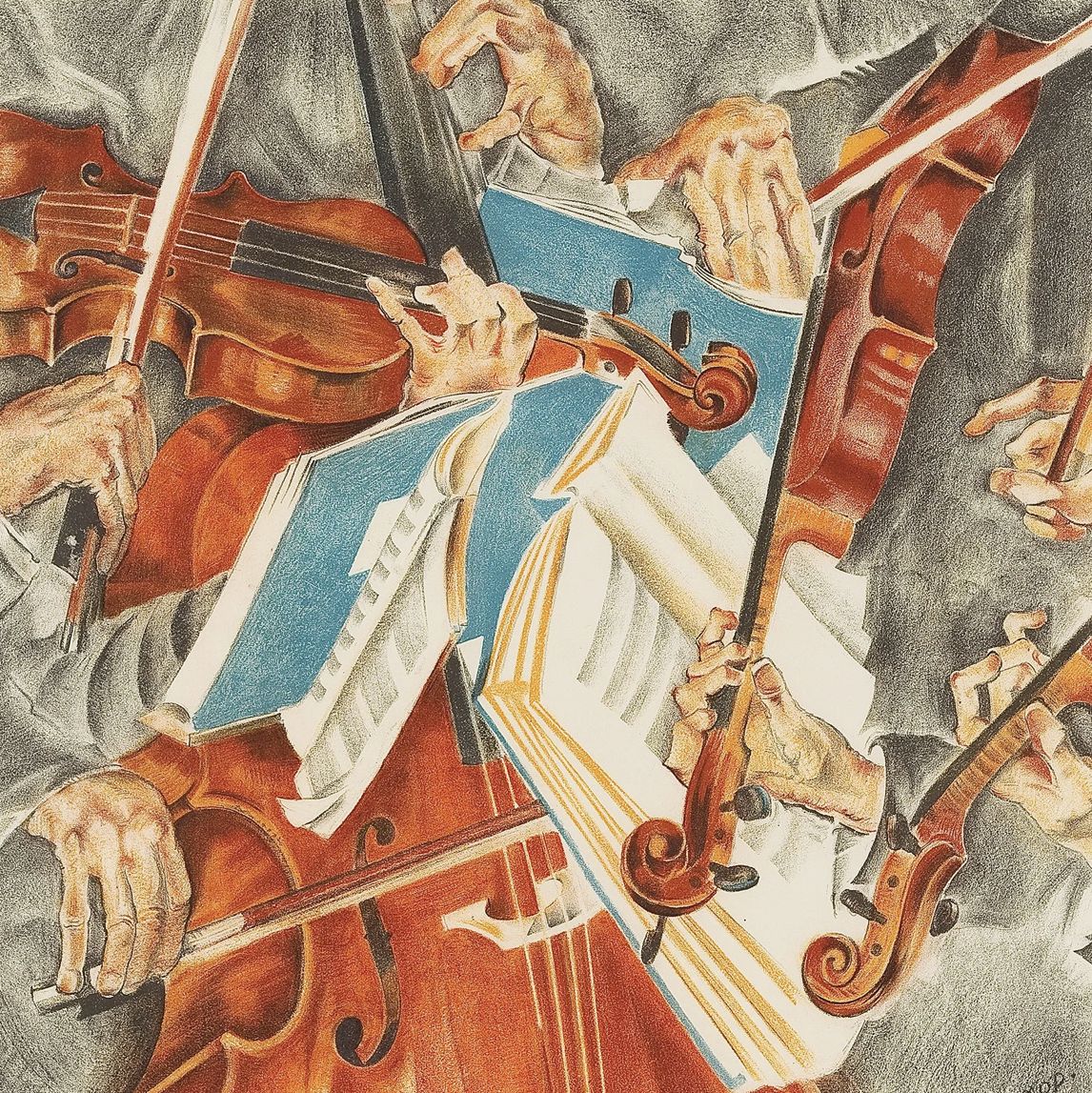
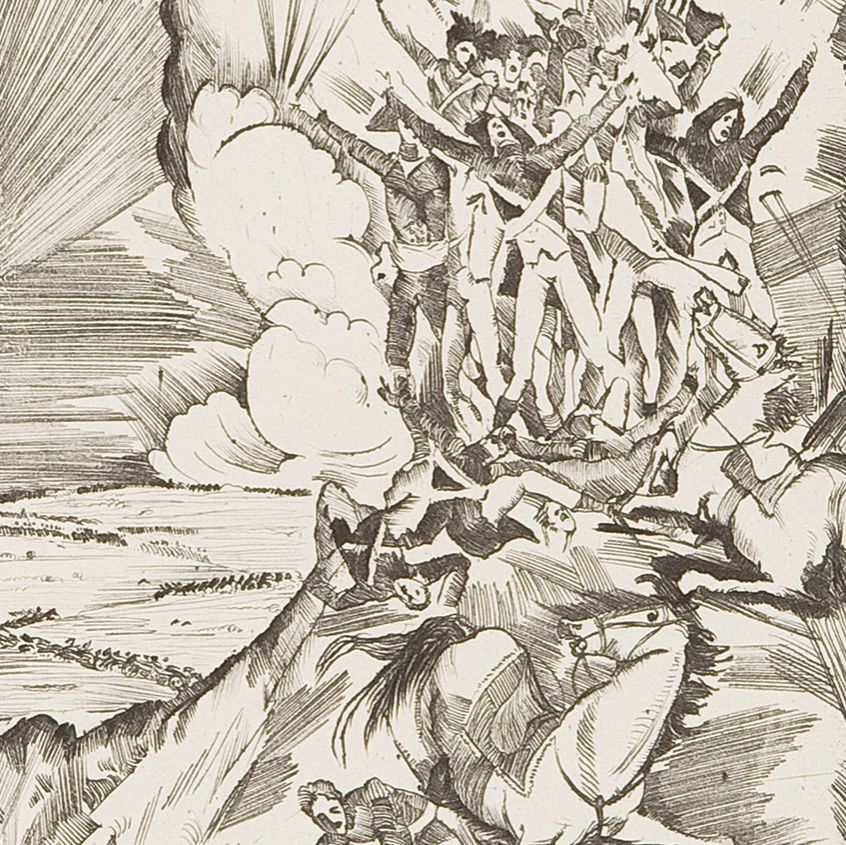
Max Oppenheimer, painter of intensity and inner turmoil
Max Oppenheimer (1885-1954) was a twentieth-century Austrian painter and a central figure in the Viennese Expressionist movement, whose work is characterized by psychological depth and a constant exploration of the human soul.
Born in Vienna into a middle-class family, he began his artistic training at the Academy of Fine Arts at an early age, where he developed a bold technique and a unique sensitivity to the inner torments of his subjects.
Strongly influenced by Expressionism, Oppenheimer quickly distinguished himself with a fresh approach to color and form, where human figures are often captured in a raw, intense and disturbing light.
The artist made a name for himself in Viennese circles by refusing to follow academic conventions, seeking instead to depict the raw, unvarnished individuality of his models.
His art is characterized by energetic brushstrokes and vivid colors that don't seek to flatter, but to capture the essence of his subjects, whether portraits or genre scenes.
Each canvas becomes an intimate confrontation between the artist and his subject, a means of expressing what is profoundly human, but also often chaotic and disturbing.
Oppenheimer is marked by a tormented vision of the human condition, where suffering, isolation and loneliness often appear as dominant themes.
Like his contemporaries such as Oskar Kokoschkahe explored the psychological depths of his models, seeking not only to capture their appearance but also to reveal their inner states of mind.
Oppenheimer's portraits, for example, are more than mere representations: they are illuminations of human frailty, where pain and vulnerability are palpable, made visible through dramatic hues and nervous features.
The psychological aspect of Oppenheimer's work
The impact of the First World War on Oppenheimer is undeniable, and his work, after the horrors of the conflict, takes an even darker, more introspective direction.
The artist now explores the physical and psychological wounds of his subjects, treating war not only as a historical event but also as a human trauma, an invisible but indelible scar.
His art, now more tormented, adopts a darker, more distorted tone, where anguish and suffering are expressed through distorted figures and dark, almost earthy color palettes.
It was during this period that he created works of striking violence and chaos, such as the series of portraits of soldiers and figures emaciated by war, marked by devastation.
Oppenheimer's forced exile in Prague, then in Paris after the Anschluss of 1938, marks another turning point in his work. Far from his native land, he seems to lose himself in a deep sense of nostalgia and melancholy, while continuing his exploration of the themes of exile and loss.
His landscapes become true allegories of absence, canvases where emptiness seems to invade the composition, where human figures are rare and color is more sober, more contemplative.
Max Oppenheimer's work, at once poignant and full of passion, lies at the crossroads between an aesthetic quest and an uncompromising search for psychological truth.
By offering us a radical, emotional vision of the human condition, he joins artists like Kokoschka, Otto Dix and Georges Rouault in their exploration of the darkest aspects of human existence.
His art, at once violent and tender, confronts us with our own frailties and the beauty of the human soul in its moments of absolute destitution.
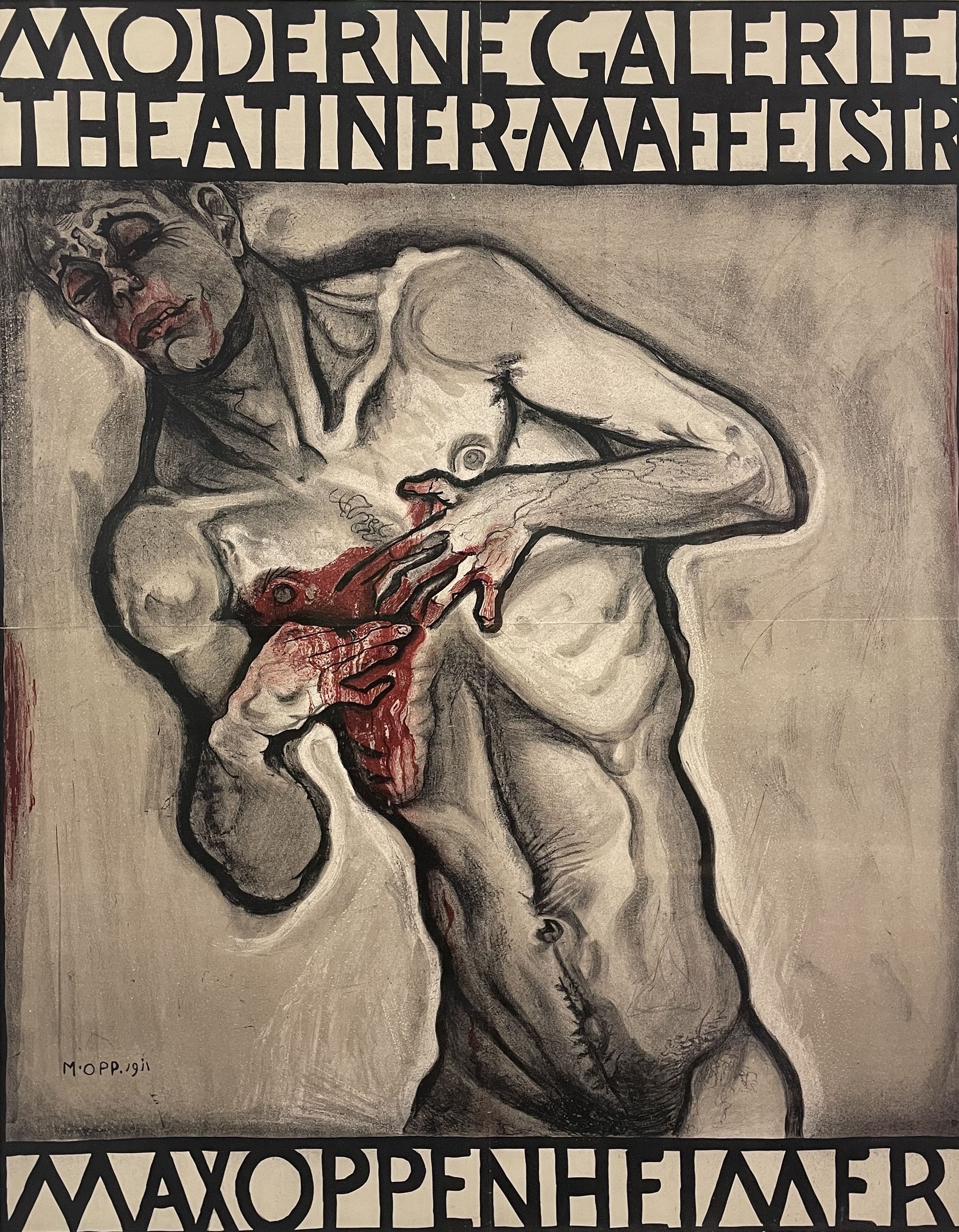
Focus on The Artist's Portrait (circa 1911), Max Oppenheimer
Here, the artist paints himself, his silhouette cut out against a dark background, almost invaded by darkness. The face, centered and luminous, captures our attention, but everything around it seems to dissolve into a heavy atmosphere, marked by palpable tension.
Facial features are rendered with nervous, vigorous brushstrokes that accentuate the depth of emotion. Oppenheimer does not seek to flatter his appearance, but to capture the essence of his own inner struggle.
The use of light on her face, raw and uncompromising, contrasts with the darkened background. This light, intensely illuminating her gaze, also seems to reveal a hidden suffering, a kind of unspoken, almost imperceptible torment.
The colors, dominated by dark, earthy tones, reinforce the atmosphere of distress and solitude that emanates from the work. Red and black mingle in a dance of dramatic hues, capturing both the artist's violence and vulnerability.
Each of the painting's plastic choices aims to translate an inner conflict, a tension between the desire to show oneself and the desire to disappear.
The psychological aspect of this work is important: Oppenheimer doesn't just paint a portrait, he strips it bare, exploring the darkest areas of his own psyche.
Her gaze, intense and penetrating, seems to go beyond appearance, towards an inner abyss. The face, almost distorted by light and shadow, reveals a heightened human fragility, where pain seems almost palpable.
Through this portrait, Oppenheimer confronts us with a brutal vision of the human condition. It's a work in which the quest for personal truth mingles with a depiction of isolation and malaise.
His aim is not to embellish or soften, but to capture the essence of the human being at his rawest and most tormented.
This portrait, like others by the artist, invites us to explore the fragility of the individual, to confront our own contradictions, and to see art as a means of expressing not only what is visible, but also what remains hidden behind the social mask.
In this way, Oppenheimer joins artists such as Kokoschka and Dix, who are interested in inner violence and the deconstruction of the self-image.

His signature
Although there are variations, here is a first example of its signature:
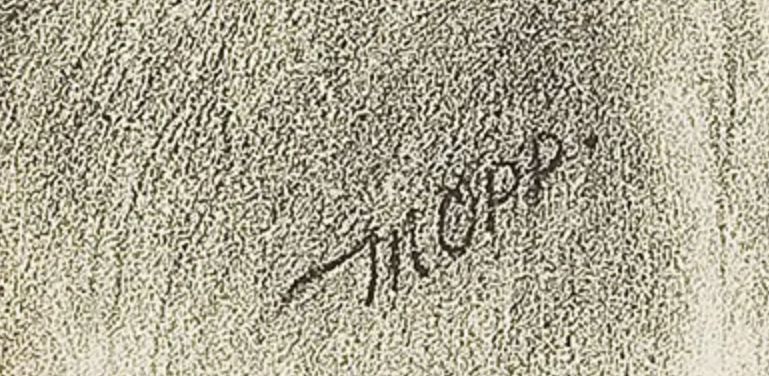
Appraising your property
If you happen to own a painting by Max Oppenheimer or one based on the artist, ask for a free estimate by filling in our form on our website.
A member of our team of experts and certified auctioneers will contact you promptly to provide you with an estimate of the value of your work, as well as any relevant information about it.
If you're thinking of selling your work of art, our specialists can also help you find alternatives to sell it at the best possible price, taking into account the market's inclinations and specificities.
Response in less than 24h
Related topics

Rating and value of works, objects and drawings by Erté
Erté is a 20th-century furniture and fashion designer who is highly prized at auction. His works are highly prized.
Read more >
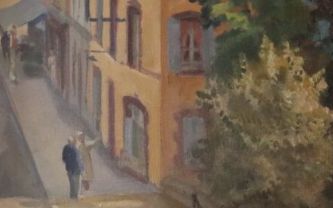
Rating and value of paintings by Jean Buhot
Jean Buhot was a twentieth-century Orientalist painter who produced oil-on-canvas paintings that enjoyed relative success at auction.
Read more >

Gaston Suisse lacquer panels: 2024 rating and value
Gaston Suisse is an Art Deco artist who produced works that are highly valued at auction. Estimate in 24h.
Read more >
Secure site, anonymity preserved
State-approved auctioneer and expert
Free, certified estimates
